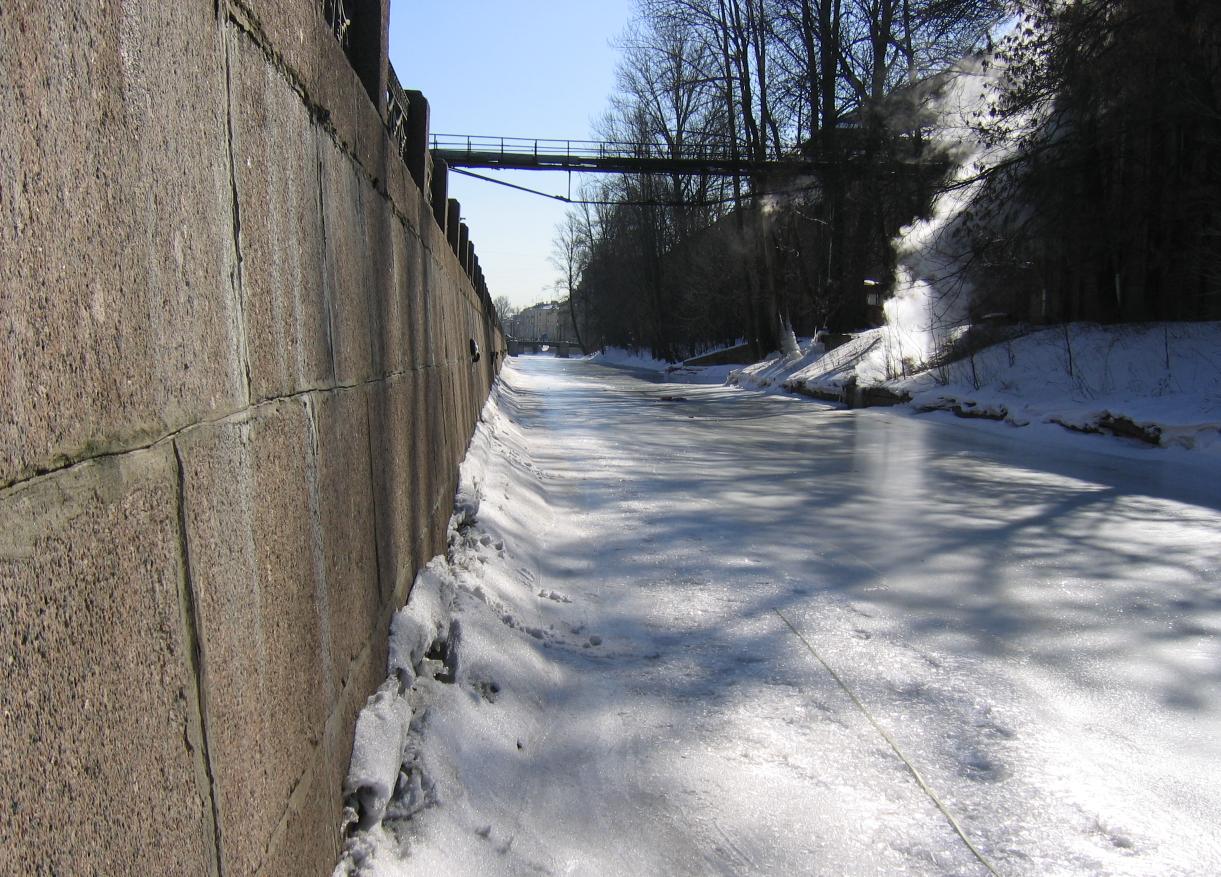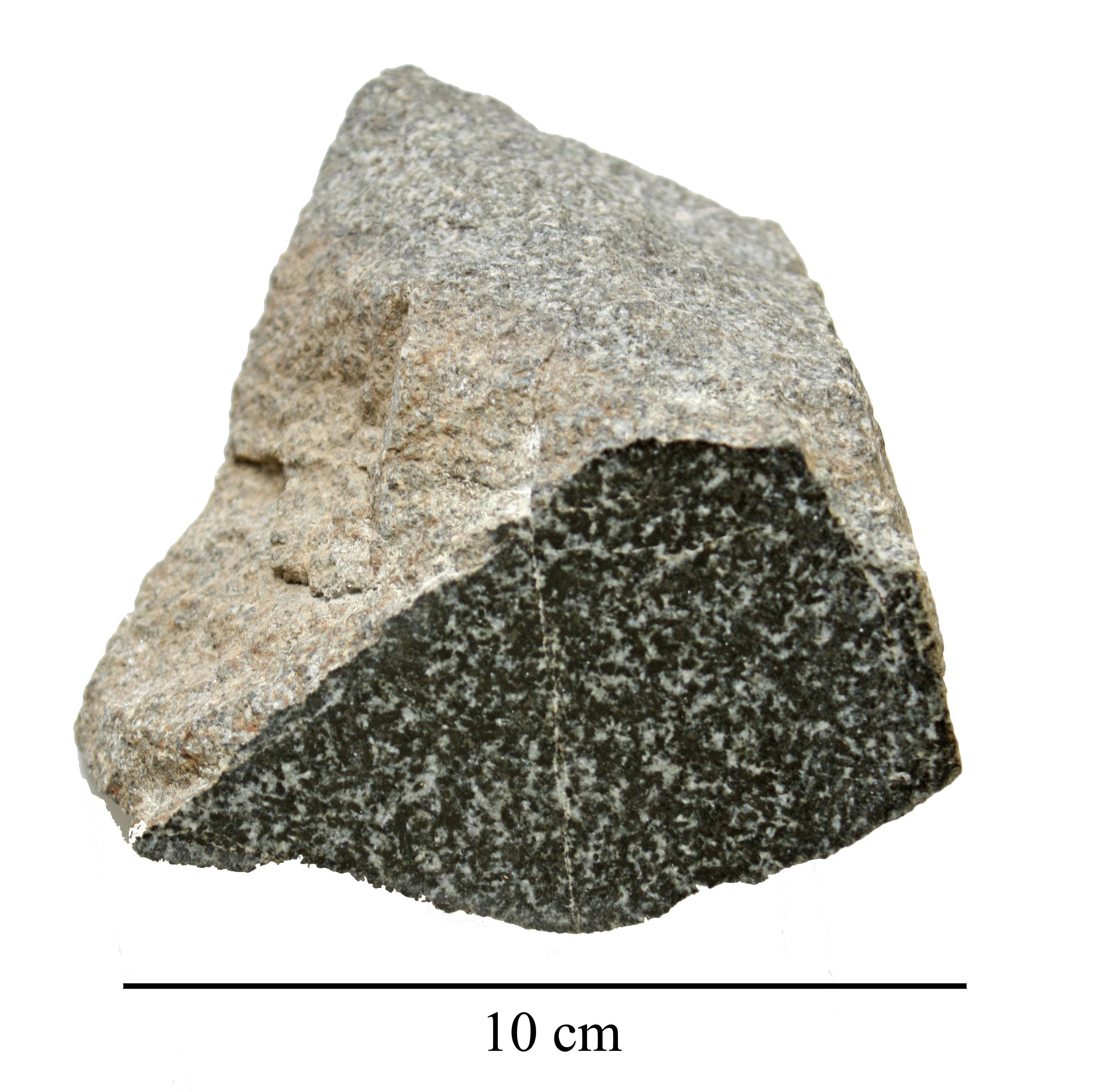|
Staro-Nikolsky Bridge
Staro-Nikolsky Bridge spans the Kryukov Canal in the Admiralteysky District of Saint Petersburg, Russia. It connects the Spassky and Pokrovsky Islands. It is a monument of history and culture. Location It is located along the axis of Sadovaya Street, at the intersection of the Kryukov Canal and the Griboyedov Canal. The Staro-Nikolsky Bridge forms an ensemble with the Pikalov and Krasnogvardeysky bridges that span the Griboyedov Canal nearby. Nikolsky Market and Nikolsky Cathedral are located near the bridge. Upstream is Kashin Bridge, below is Smezhny Bridge. The nearest metro stations are Sadovaya, Sennaya Ploschad, and Spasskaya. Name The bridge is named after the nearby Nikolsky Cathedral. Initially, the bridge was called Nikolsky. However, in 1849, after the nearby bridge across the Catherine Canal began to be called Novo-Nikolsky, the bridge over the Kryukov Canal was named Old Nikolsky or Staro-Nikolsky. History From 1717 to 1720, a wooden bridge existed on ... [...More Info...] [...Related Items...] OR: [Wikipedia] [Google] [Baidu] |
Kryukov Canal
Kryukov Canal (russian: link=no, Крюков канал) is one of the Canals in central Saint Petersburg, Russia. Name In 1738, the canal was named after the contractor Semyon Kryukov. History The Kryukov Canal runs from the Admiralteysky Canal in the area of the present Labor Square and all the way to the Fontanka River. Kryukov Canal was originally dug in 1719–1720 from the Neva River to the Moyka River for transport purposes. During the construction of part of the Annunciation Bridge, some water was piped through the present Labor Square. The water pipe has survived to this day.//СПИГ Since 1830, the section from the Moyka to the Fontanka became called the Kryukov Canal. Granite embankments were built in 1801–1807. Geographic information The length is 1.5 km, the width is up to 20 m, and the depth is 2 m. Together with the Admiralteysky Canal, the Kryukov Canal separates the New Holland Island from the Second Admiralteysky Island. Bridges acr ... [...More Info...] [...Related Items...] OR: [Wikipedia] [Google] [Baidu] |
Admiralteysky District, Saint Petersburg
Admiralteysky District (russian: Адмиралте́йский райо́н) is a district of the federal city of St. Petersburg, Russia. As of the 2010 Census, its population: was 157,897; down from 187,837 recorded in the 2002 Census. Geography The district borders the Neva River in the north and in the west, the Yekateringofka River in the southwest, areas around Gorokhovaya Street in the east, and areas around Zagorodny Avenue in the south. History It was established on March 11, 1994 as a result of the merger of Leninsky and Oktyabrsky Districts.Official website of the Administration of St. PetersburgAdmiralteysky District. General Information. Municipal divisions Admiralteysky District comprises the following six municipal okrugs:Law #411-68 * Admiralteysky * Izmaylovskoye *Kolomna Kolomna ( rus, Колóмна, p=kɐˈlomnə) is a historical city in Moscow Oblast, Russia, situated at the confluence of the Moskva and Oka Rivers, (by rai ... [...More Info...] [...Related Items...] OR: [Wikipedia] [Google] [Baidu] |
Bridges In Saint Petersburg
There are more than 342 bridges in the city limits of Saint Petersburg, Russia. This is a partial list of the most famous ones. Peter the Great was designing the city as another Amsterdam and Venice, with canals instead of streets and citizens skillful in sailing. Initially, there were only about ten bridges constructed in the city, mainly across ditches and minor creeks. By Peter's plans, in the summer months, the citizens were supposed to move around in boats, and in the winter months when the water froze to move in sledges. However, after Peter's death, new bridges were built, as it was a much easier way of transportation. Temporary ponton bridges were used in the summertime. The first permanent bridge of bricks and stones across the main branch of the Neva river appeared in 1850. Today, there are more 342 bridges over canals and rivers of various sizes, styles and constructions, built at different periods. Some of them are small pedestrian bridges, such as Bank and Lion bridge ... [...More Info...] [...Related Items...] OR: [Wikipedia] [Google] [Baidu] |
Diabase
Diabase (), also called dolerite () or microgabbro, is a mafic, holocrystalline, subvolcanic rock equivalent to volcanic basalt or plutonic gabbro. Diabase dikes and sills are typically shallow intrusive bodies and often exhibit fine-grained to aphanitic chilled margins which may contain tachylite (dark mafic glass). ''Diabase'' is the preferred name in North America, while ''dolerite'' is the preferred name in the rest of the English-speaking world, where sometimes the name ''diabase'' refers to altered dolerites and basalts. Some geologists prefer to avoid confusion by using the name ''microgabbro''. The name ''diabase'' comes from the French ', and ultimately from the Greek - meaning "act of crossing over, transition". Petrography Diabase normally has a fine but visible texture of euhedral lath-shaped plagioclase crystals (62%) set in a finer matrix of clinopyroxene, typically augite (20–29%), with minor olivine (3% up to 12% in olivine diabase), magnetit ... [...More Info...] [...Related Items...] OR: [Wikipedia] [Google] [Baidu] |
Horsecar
A horsecar, horse-drawn tram, horse-drawn streetcar (U.S.), or horse-drawn railway (historical), is an animal-powered (usually horse) tram or streetcar. Summary The horse-drawn tram (horsecar) was an early form of public rail transport, which developed out of industrial haulage routes that had long been in existence, and from the omnibus routes that first ran on public streets in the 1820s{{{citation needed, date=February 2022, using the newly improved iron or steel rail or ' tramway'. They were local versions of the stagecoach lines and picked up and dropped off passengers on a regular route, without the need to be pre-hired. Horsecars on tramlines were an improvement over the omnibus, because the low rolling resistance of metal wheels on iron or steel rails (usually grooved from 1852 on) allowed the animals to haul a greater load for a given effort than the omnibus, and gave a smoother ride. The horse-drawn streetcar combined the low cost, flexibility, and safety ... [...More Info...] [...Related Items...] OR: [Wikipedia] [Google] [Baidu] |
Spasskaya (Saint Petersburg Metro)
Spasskaya (russian: Спáсская) is the current western terminus station of the Line 4 of the Saint Petersburg Metro The Saint Petersburg Metro (russian: links=no, Петербургский метрополитен, Peterburgskiy metropoliten) is a rapid transit system in Saint Petersburg, Russia. Construction began in early 1941, but was put on hold due to Wor .... It is part of the first three-way transfer station that also includes Sadovaya and Sennaya Ploshchad stations. The station was originally scheduled to open in December 2008, but eventually opened on March 7, 2009 because of last-minute repairs to station's transfer escalators. {{As of, 2009, the station does not have a ground-level vestibule or a connecting escalator. Passengers have to transfer to one of the connected stations in order to exit to the city. Gallery File:SpasskayaMetrostation-2009-03-07-13.jpg, Location of the future exit See also * Saviour Church on Sennaya Square - demolished church ... [...More Info...] [...Related Items...] OR: [Wikipedia] [Google] [Baidu] |
Admiralteysky District
Admiralteysky District (russian: Адмиралте́йский райо́н) is a district of the federal city of St. Petersburg, Russia. As of the 2010 Census, its population: was 157,897; down from 187,837 recorded in the 2002 Census. Geography The district borders the Neva River The Neva (russian: Нева́, ) is a river in northwestern Russia flowing from Lake Ladoga through the western part of Leningrad Oblast (historical region of Ingria) to the Neva Bay of the Gulf of Finland. Despite its modest length of , it ... in the north and in the west, the Yekateringofka River in the southwest, areas around Gorokhovaya Street in the east, and areas around Zagorodny Avenue in the south. History It was established on March 11, 1994 as a result of the merger of Leninsky and Oktyabrsky Districts.Official website of the Administration of St. PetersburgAdmiralteysky District. General Information. Municipal divisions Admiralteysky District com ... [...More Info...] [...Related Items...] OR: [Wikipedia] [Google] [Baidu] |
Sennaya Ploshchad (Saint Petersburg Metro)
Sennaya Ploshchad ( rus, Сеннáя плóщадь, p=sʲɪˈnːajə ˈploɕːɪtʲ, '' Sennaya Square'') is a station on the Moskovsko-Petrogradskaya Line of Saint Petersburg Metro. History The station opened on 1 July 1963. It is a deep underground pylon station. Its surface vestibule is situated near Sennaya Square, which gives its name to the station. The Saviour Church on Sennaya Square was demolished to give way for construction of the entrance to the station. Before 1992 both the square and the station were known under the name Ploshchad Mira (Peace Square). In June 1999 the concrete canopy of the surface vestibule collapsed, killing seven. The station is connected to the station Spasskaya of the Pravoberezhnaya Line and Sadovaya of the Frunzensko-Primorskaya Line via an underground transfer corridor. On 3 April 2017, a suicide bomber blew himself up on a train between stations Sennaya Ploschad and Tekhnologichesky Institut Tekhnologichesky Institut ( rus, Тех ... [...More Info...] [...Related Items...] OR: [Wikipedia] [Google] [Baidu] |



